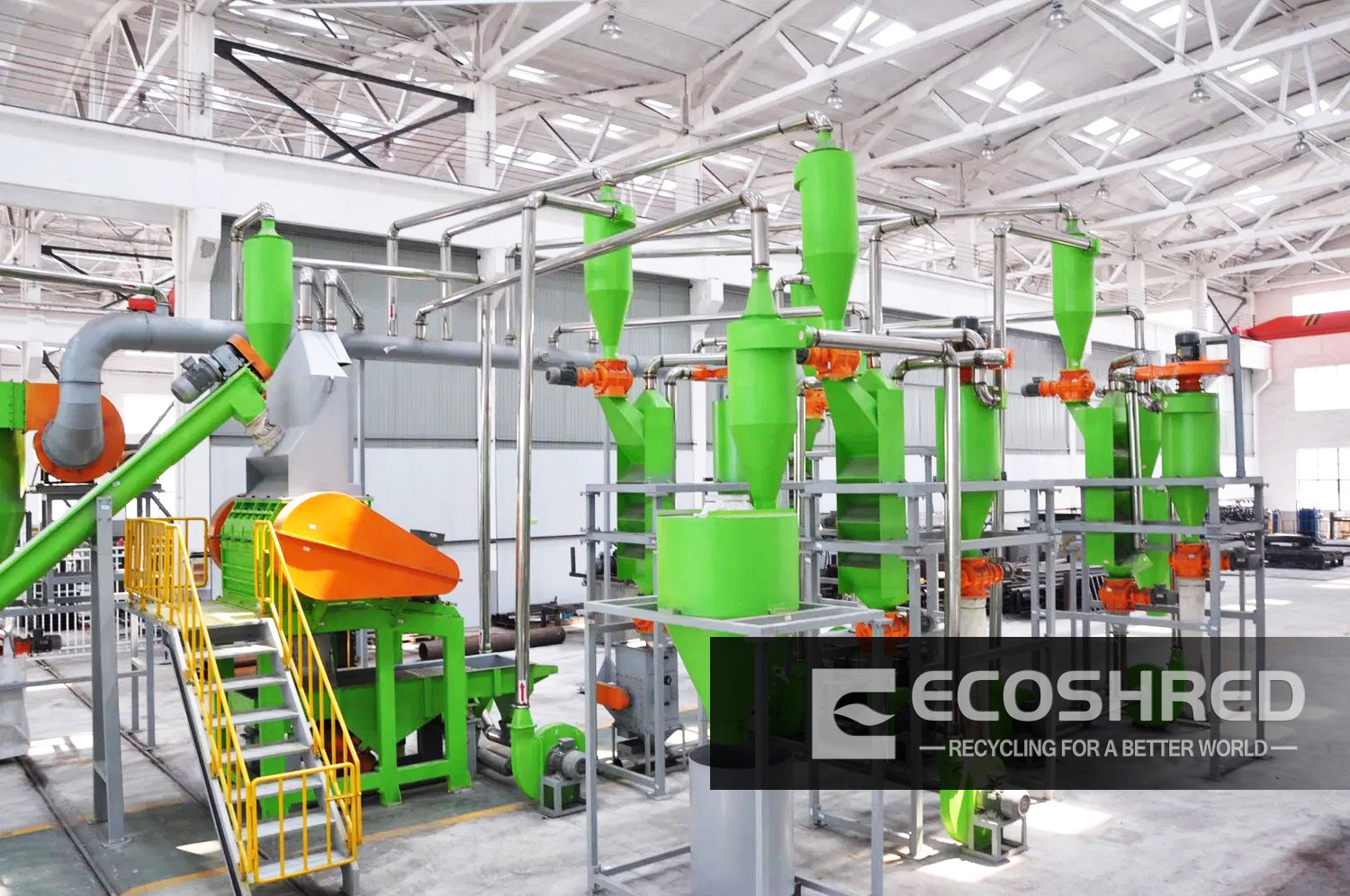A well-optimized tire recycling line relies on more than primary shredding equipment. Supporting systems such as cooling towers, dust removal systems, and weighing & packing units are essential for maintaining productivity, safety, and product quality. Here’s how each component contributes to a seamless operation:
1. Cooling Tower
Processed rubber crumbs often retain high temperatures (150-200°C) after shredding and granulation. A cooling tower rapidly reduces material temperature to 25-40°C using air or water circulation. This prevents rubber particles from agglomerating or degrading during storage. Without cooling, recycled rubber may solidify into unusable blocks, leading to material waste and customer dissatisfaction.
2. Dust Removal System
Tire recycling generates fine rubber dust, which poses respiratory risks to workers and accelerates equipment wear. A dust removal system combines cyclone separators and HEPA filters to capture over 95% of airborne particles. This ensures compliance with occupational safety standards (e.g., OSHA) and reduces maintenance frequency. Facilities lacking such systems risk regulatory penalties and operational downtime.
3. Weighing and Packing System
Consistent packaging is critical for market acceptance. A weighing and packing system automates the measurement and bagging of rubber crumbs into standardized units (e.g., 25kg bags). Automated systems eliminate human error in weight measurement and enhance packaging efficiency by 30-50%, compared to manual methods. Uniform packaging also strengthens brand credibility in competitive markets.
Operational Benefits
Quality Assurance:Cooling preserves material integrity for downstream applications.
Regulatory Compliance:Dust control meets workplace safety requirements.
Cost Efficiency:Automated packing reduces labor costs and material waste.
For tailored solutions to optimize your tire recycling line, contact our team for expert guidance.

